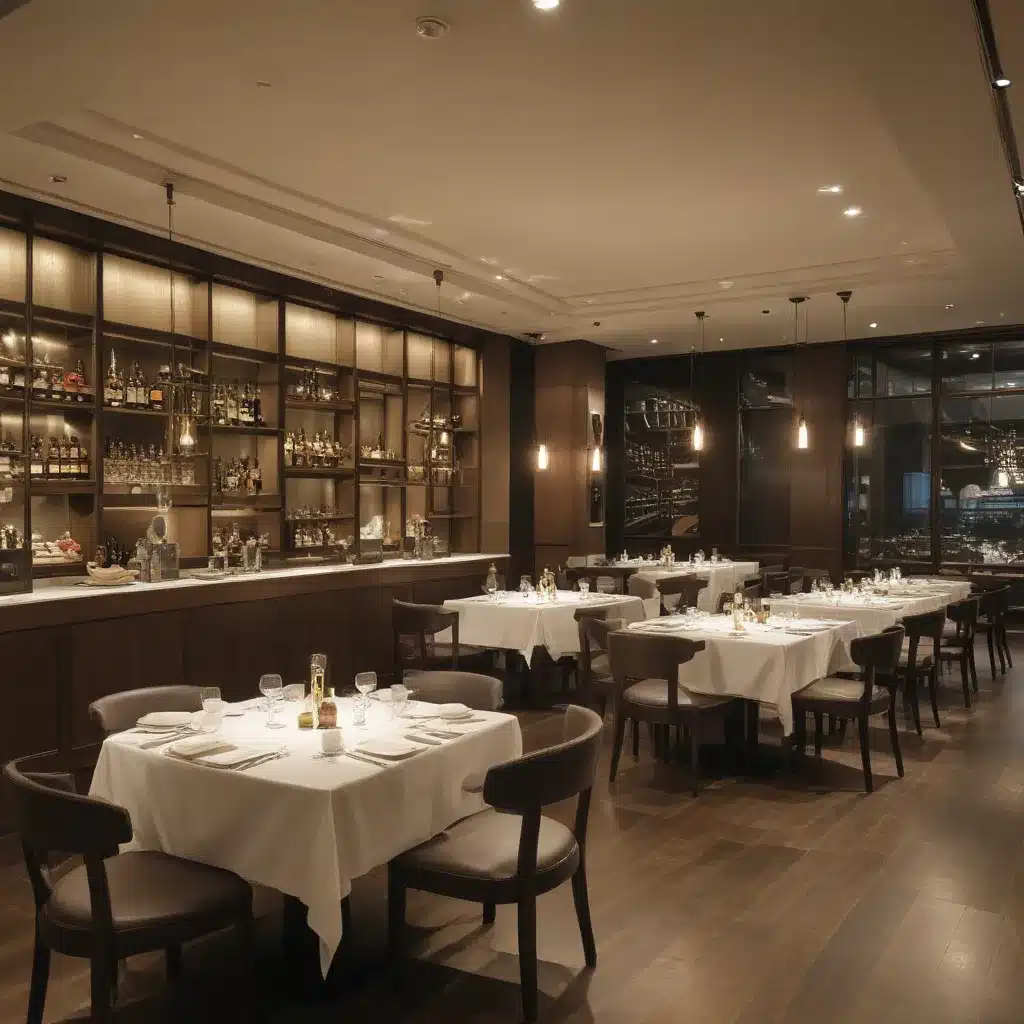
Uncovering the Culinary Secrets of Seoul’s Michelin-Starred Marvels
As I step into the dimly lit, intimate dining room of Gaon, one of Seoul’s Michelin-starred gems, I can’t help but feel a tingle of anticipation. The air is charged with the aroma of expertly prepared Korean cuisine, and I know I’m in for a truly special culinary journey.
Being a Michelin restaurant inspector is no easy feat. We have to maintain complete anonymity while traversing the globe, indulging in up to 10 gourmet meals per week. It’s a tough job, but someone has to do it! As I shared with Forbes, our training is extensive, and we must develop a deep understanding of the local cuisine before venturing out to assess the city’s finest dining establishments.
Uncovering Seoul’s Michelin-Starred Wonders
Seoul has quickly emerged as a global culinary powerhouse, with a dazzling array of Michelin-starred restaurants that showcase the best of Korean cuisine. From the artful plating at Kwon Sook Soo to the time-honored traditions upheld at Gaon, each establishment in this vibrant city offers a unique and unforgettable dining experience.
Kwon Sook Soo: Artistry on a Plate
As I take my seat at Kwon Sook Soo, I’m immediately struck by the stunning presentation of the dishes. The chef, Kwon Sook Soo, is a true artist, transforming the finest Korean ingredients into edible masterpieces. Each course is a meticulously crafted symphony of flavors, textures, and colors that captivates the senses.
One standout dish is the Hanwoo beef tartare, where the tender, marbled meat is delicately seasoned and served with a perfectly balanced array of accompaniments. The interplay of the cool, creamy beef, the crunch of the pear, and the subtle heat of the gochujang is nothing short of sublime.
Gaon: Honoring Tradition with a Modern Twist
As I step into the serene, minimalist setting of Gaon, I’m transported back in time, surrounded by the timeless elegance of traditional Korean architecture. But the cuisine that unfolds before me is anything but outdated. As the author of “Crying in H Mart” so eloquently described, the flavors of Korea are having a global moment, and Gaon is at the forefront of this culinary revolution.
The tasting menu is a masterful blend of classic techniques and contemporary interpretations. The banchan, or small shared plates, are a delightful symphony of textures and flavors, from the crisp, pungent kimchi to the silky, savory tofu. And the main courses, such as the slow-cooked beef short ribs, are cooked to perfection, the meat falling off the bone with the slightest touch of the chopsticks.
La Yeon: Reaching New Heights in Korean Cuisine
As I ascend to the top floor of the Shilla Hotel, I’m greeted by the breathtaking panoramic views of Seoul that set the stage for my culinary experience at La Yeon. This Michelin-starred restaurant is a true temple of Korean gastronomy, where the chefs have honed their craft to the highest level.
The menu is a masterful exploration of traditional Korean flavors, elevated with a touch of modern flair. The seafood dishes, in particular, shine – the grilled mackerel is a revelation, the flesh flaky and rich, perfectly balanced by the tangy, slightly sweet sauce. And the bibimbap, that iconic Korean dish, is transformed into a work of art, the components artfully arranged in a wooden bowl.
Michelin Musings: The Secrets of the Coveted Stars
As a Michelin restaurant inspector, I’ve had the privilege of witnessing the inner workings of the world’s most prestigious culinary guide. The Michelin Guide is often shrouded in mystery, with its anonymous inspectors and rigorous evaluation process, but the truth is, our mission is simple: to provide our readers with an honest, reliable assessment of the dining experiences they can expect.
The path to earning a Michelin star is no easy feat. Chefs must consistently demonstrate mastery of their craft, from the quality of their ingredients to the technical execution of each dish. And it’s not just about creating a single standout meal – consistency is key, as inspectors will visit a restaurant multiple times throughout the year to ensure that the level of excellence is maintained.
But what truly sets the Michelin-starred establishments apart is the unique personality and signature of the chef. It’s that intangible quality that sets their cuisine apart, a reflection of their passion, creativity, and dedication to their craft. And in a city like Seoul, where the culinary landscape is constantly evolving, the Michelin-starred restaurants are the shining beacons that guide diners to the most exceptional dining experiences.
Exploring Seoul’s Culinary Landscape Beyond Michelin
While the Michelin-starred restaurants in Seoul undoubtedly represent the pinnacle of the city’s culinary prowess, there’s so much more to discover in this vibrant, food-lovers’ paradise. From the bustling street food markets to the cozy, family-run eateries, Seoul offers a diverse and dynamic gastronomic landscape that is sure to captivate even the most discerning palate.
One of my favorite spots, for instance, is Hotel Stay Inn Seoul, a charming boutique hotel that boasts a fantastic in-house restaurant. The chefs here seamlessly blend traditional Korean flavors with modern techniques, creating dishes that are both comforting and innovative. And the hotel’s prime location in the heart of the city means you’re never far from the next culinary adventure.
So whether you’re seeking out the Michelin-starred marvels or exploring the hidden gems of Seoul’s food scene, one thing is certain: this city is a true food lover’s paradise, and the journey of discovering its culinary wonders is one that will linger long after the last bite.

